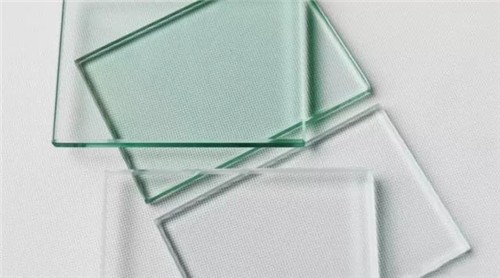Glass polishing is a critical step in the manufacturing and finishing of glass products. It involves using abrasive materials to remove imperfections and create a smooth, clear surface. One of the key components of the glass polishing process is using different grits of sandpaper. The choice of sandpaper grit is critical to achieving the smoothness and transparency required for the glass. When it comes to glass polishing, the choice of sandpaper grit is critical to achieving the desired smoothness and clarity. Glass polishing generally uses sandpaper of 800 grit, 1200 grit, 2000 grit, 3000 grit, or above. Each particle size serves a specific purpose in the glass polishing process.
1. Preliminary polishing: 800 grit sandpaper
In the early stages of glass polishing, 800 grit sandpaper is essential for preliminary polishing. This particle size effectively removes burrs and small imperfections from the glass surface. 800-grit sandpaper has strong polishing power and helps make the glass surface flat and smooth. This initial step is essential to prepare the glass surface for further polishing and to achieve the desired transparency.
2. Mid-stage polishing: 1200 grit and 2000 grit sandpaper
Intermediate polishing is a critical step in achieving a flawlessly smooth glass surface. At this stage, using 1200 and 2000 grit sandpaper is critical to achieving the desired smoothness and clarity. 1200 grit sandpaper is finer than the coarse sandpaper used in the early stages of polishing. It is designed to remove small scratches, blemishes, and blemishes that may still be present on the glass surface. The abrasive particles in 1200-grit sandpaper are smaller and more tightly packed, resulting in a more precise and controlled polishing action.
As the polishing process progresses, 2000 grit sandpaper is then used to further refine the glass surface. This ultra-fine sandpaper removes smaller imperfections and scratches, leaving the glass surface exceptionally smooth without any visible imperfections.
The use of 1200 and 2000 grit sandpaper in the intermediate stages of glass polishing is critical to achieving a high level of clarity and transparency. By effectively removing blemishes and scratches, these finer-grit sandpapers help enhance the overall beauty of glass, making it suitable for a wide range of applications, including automotive, architectural, and decorative uses.
In addition to improving the visual appearance of the glass, using 1200-grit and 2000-grit sandpaper can also help improve the material’s functional properties. A smoother surface reduces the potential for light scattering and distortion, making the glass optically clearer for applications where visual clarity is critical.
Additionally, using finer-grit sandpaper during the intermediate stages of glass polishing can minimize the amount of material removed, ensuring the glass retains its original thickness and structural integrity. This is particularly important in applications that require glass to meet specific size and performance requirements.
It is important to note that using 1200-grit and 2000-grit sandpaper requires skill and precision to ensure that the glass surface is polished evenly without causing any damage. Proper technique, including the use of consistent pressure and movement, is critical to obtaining the desired results without compromising the integrity of the glass.
3. Later stage of polishing: 3000 grit sandpaper or above
The later stages of glass polishing are critical steps in achieving a flawlessly smooth surface. This stage requires the use of sandpaper above 3000 grit, which contains extremely fine polishing particles. These particles are essential to completely remove any remaining scratches and blemishes from the glass surface, resulting in a pristine and polished surface.
Using 3000 grit or higher sandpaper is critical to achieving the desired smoothness and clarity on your glass surface. The fine particles in this sandpaper effectively remove blemishes and blemishes, leaving the glass with high clarity and transparency. This level of polish is essential for applications where the appearance and quality of glass are critical, such as the production of high-end glass products, optical lenses, and precision instruments.
When using 3000 grit sandpaper or above, it is important to follow proper polishing techniques to ensure the best results. Apply consistent and gentle pressure when using sandpaper, moving in a circular or back-and-forth motion to evenly distribute the polishing particles over the glass surface. It is also important to check the surface regularly during the polishing process to ensure that all scratches and imperfections are removed effectively.
Using 3000 grit or higher sandpaper is especially beneficial for repairing old or damaged glass surfaces. This sandpaper can refresh the look of glass by effectively removing scratches and blemishes, making it look like new again. This is particularly valuable for the restoration of antique glassware, antique mirrors, and other valuable glass items, where the original appearance must be preserved.
In addition to aesthetics, using 3000-grit or higher sandpaper can also help improve the functional properties of the glass. By achieving a smooth, flawless surface, glass becomes easier to clean and maintain, and more resistant to environmental factors such as corrosion and abrasion.
Post time: Jun-21-2024

